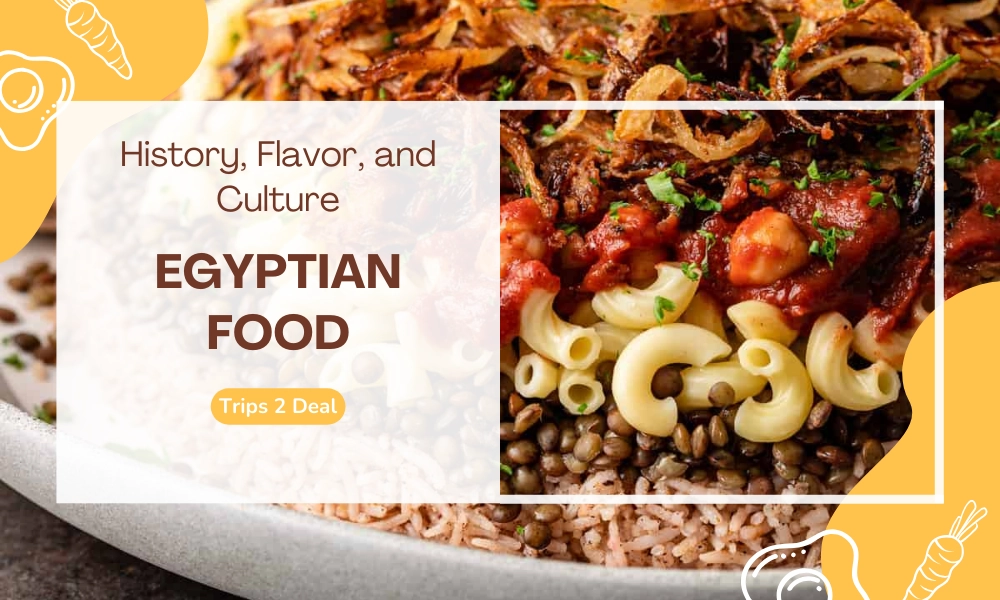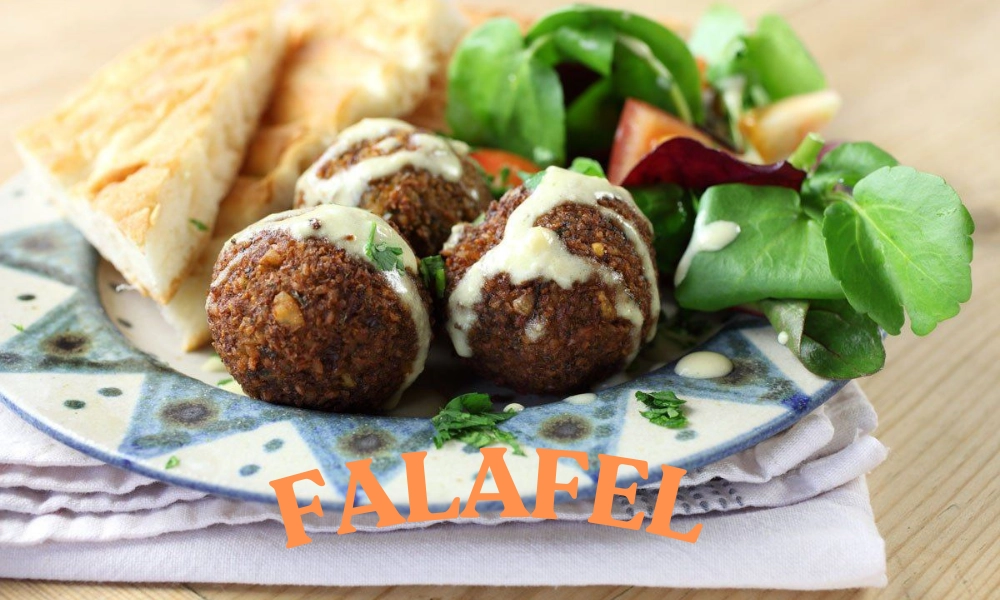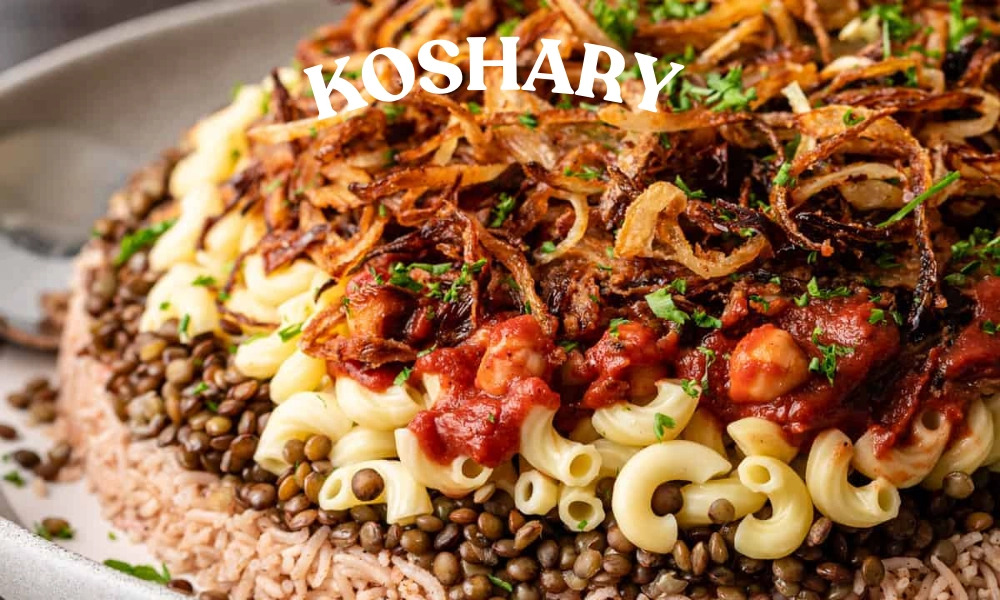Blogs

Egyptian Foods: A Journey Through History, Flavor, and Culture
Egyptian Food is more than any other cuisine’s blending traditions of ancient techniques with contemporary styles. Picture a roundel filled with golden grains from the shores of the Nile, fragrant and spicy from the heat of the markets, and palaces of culinary techniques built through generations. A single dish is never a mere dish, but always a part of a story: the story of a people who have always drawn whatever they could from the ground, of happy gatherings, of an art form and its practitioners that are broad-based, complex, and ancient, just like the food itself.
A Cuisine Centered on Land:
It is no exaggeration to say that the Nile River was pivotal in the development of the Egyptian cuisine. Fish, which is the principal source of protein, could be caught from this river and cultivable products could be obtained from its banks. Fish added a lot of protein nutritionally, and they included corriander and cummin as spices and honey was also used for sweetness. This historical backing is what contributed to the tastier and richer modern Egyptian cuisine.
How Ancient Tastes Affected the Modern Egyptian Food:
The modern Egyptian food history has retained its ancient history where the common recipes are in most casesheresies. Some of the spices that were used in the ancient Egyptian kitchen such as fenugreek, coriander and anise, have not become extinct even in today’s kitchens. Certain national elements that existed in antiquity many dishes including Ful Medames, which is a stew of fava beans and the famous Ta’ameya, a kind of falafel have counterparts. These dishes that were once the food of the poor have now become national dishes, which are eaten by people from all walks of life.

Egyptian Diet: Bread, The Rest's Leftovers:
Bread or what Egyptians call aish baladi is one of the most central aspects of the food of Egyptians since the word itself means life in Egyptian Arabic. This flat round bread made of whole-wheat grain has been with the people of Egypt since the age of the pharaohs when it helped sustain a floral society. Mostly cooked in a community oven, Aish Baladi is eaten with a range of foods, from tahini or honey to stews or meats.
As such, Egyptian diet does not restrict itself to bread only and instead staples like rice and lentils also dominate the meals. The utilisation of this creativity could be seen in the Koshari- a dish of spaghetti, rice, lentils topped with spicy tomato sauce and crispy onions. Beans, especially broad beans, have been an important part of the Egyptian diets and each time there was Ful Medames and Ta’amiya it was obligatory for it to also have bean-based ground Fava With these staples, modest yet filling and nutritious cuisine can be put together.
Fulfilling Egyptian Mornings:
The two dishes that have certainly indelibly marked the preferences of EGYPTIANs at breakfast are Ful Medames and Taameya. Typically a simple dish of fava beans cooked again slowly and seasoned with aromatic oil, garlic and lemon juice with minimal preparation, Ful Medames is a healthy dish which is why people have been eating it for centuries. It is usually eaten with hot Aish Baladi bread and is sometimes accompanied with assorted toppings like chopped vegetables, eggs, or hot peppers. This dish is not only satisfying but also represents the essence of traditional Egyptian food which is simple and wholesome.
Ta’ameya, otherwise known as Falafel is yet another option that is popular for breakfast, though in this case it is pure Egyptian. These are deep fried green patties made from crushed fava beans rather than chickpeas, flavored with herbs such as parsley and coriander.
Koshary Comfort Food That’s Also Egypt’s National Dish:
Koshari which is popularly regarded as the national dish of Egypt is one dish that clearly reflects the multifaceted cuisine of the country. This simple and comfort food is a vegetarian dish of rice, lentils, and macaroni with a rich tomato sauce topped with chickpeas and crispy fried onions in Egypt. It includes Indian, Italian, and Middle Eastern influences, thus the cuisine has been said to be multicultural. Normally found in special Koshari spots or street vendors and eaten with the family, it also bears the concept of sharing.

Tasty Desires: Who Does Not Love The Cakes From Egypt:
The richness of Flavors in Egyptian desserts married with their textures is simply bliss, with nuts, honey and custards being some of the common ingredients. Basbousa, also known as Hareeseh or revani, is one of the most popular Arabic desserts with chipped snow in the middle east. It is a moist semolina cake soaked in sweet syrup and is usually garnished with almonds, coconut or both. This dessert has a light, melt-in-the-mouth consistency and just enough hint of sweetness to make it one of the most loved desserts in household functions & festivities. Kofta is another conventional dessert in Egypt consisting of hash nuts of creamy dessert cut with powered sugar syrup. It is a thin pastry cross-stringing with crispy dough into which nuts or cream cheese is stuffed and sugar syrup is slathered. It has a crispy surface or crust outside but the inside filling is soft and sweet.
Looking onto The Egyptian Fast Food Culture:
The street food culture in Egypt is an important component of the local food culture offering something interesting to taste and smell. Such appetizing and pocket friendly food is found right in the streets starting from the busiest cities and markets in Cairo down to promenades in Alexandria. Shawarma is marinated meat shaved off thin pieces and wrapped in flatbread with fresh vegetables and tahini sauce, which is also very common and influenced by the Levant introduction. Initiating from Kofta, in this case fried liver sandwiches, are also one such kind and they too are very delicious with chopped up sour vegetables dipped sandwich rolls.
Seafood Specialties:
With a long stretch of coastline along the Mediterranean Sea and the Red Sea as well as the fertile Nile, Egypt’s geography also has a lot of seafood to offer. They get fresh seafoods and specialities in places like Alexandria and Hurghada thanks to their sea waters. The local people also enjoy eating grilled and sometimes fried fishes, bashed in a blend of spices and herbs. Another dish that many people will come across and is common in coastals houses is a recipe known as Sayadeya which has fish and rice delicately prepared in spiced tomato sauce.
Feseekh, a somewhat poisonous fish saved and cooked with salt usually comes as a delight after the Sham El-Nessm boom festival. The strong smell of this dish might alarm some people because it is not appetizing at all. But many Egyptians consider it a favorable food. Sometimes with tahini and Aish Baladi, grilled tilapia which they called Bolti is served in the side in the banks of the Nile. To most people, those seafood dishes take them back to the waters that feed their ancestors for many years while others see the cuisine as an expression of the countries diversity and its valuable black earth’s richness.

Dining Like a Pharaoh:
The royalty of ancient Egypt consumed more types of food than what is affordable for the ordinary person, an indulgence that wealth came with. An average man had barley bread, beans, and vegetables in plenty, but the pharaohs and their kin had meat like beef, goose, duck, and other fruits such as figs, dates, and peels pomegranate. Honey, aromatic herbs or various spices contributed towards enhancing the flavors and made it extravagant.
Celebrating with Food: Egyptian Festive Dishes Food is an integral part of every celebration in Egypt, and it is common to find special meals prepared for specific religious and cultural celebrations. Ramadan is the holy month when Muslims fast for a whole month, and families come together in Iftar, the meal to break the fast with foods, one of which is Fattah, which is made of layers of rice and bread with meat and vinegar and garlic sauce on top. In the festivals of Eid al-Fitr, attractive snacks such as Kahk, are baked to distribute to relatives, where Kahk are cookies with a filling of dates or nuts and can be quite buttery.
The Art of Egyptian Tea and Coffee: In Egypt, tea and coffee are not simply liquid to drink, but distinctly integrated into social and cultural practices. Usually, Egyptians drink black tea, which is mostly served at a small glass and with a lot of sugar, and several times with a sprig of mint or sage with it, who’ll taste it as well. Coffee, referred to as ahwa, is also part of the Egyptian culture and practices. It is often thick and strong and made with cardamom and served in demitasse. Though not so popular as tea, coffee is yes an important aspect of social practice, especially in cities.
The traditional coffeehouses, or 'ahwas', are commonly used by people to talk about the latest political topics or to play backgammon or merely watch people. The culture of tea and coffee in Egypt is not concerning simply the consumption of these beverages; it is also the experience in unison.





